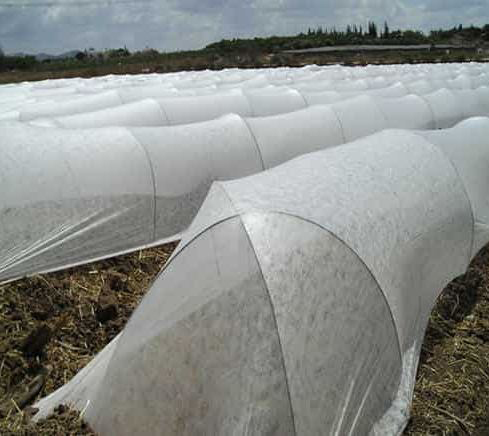
Non-Woven Industry DevelopmentNon-woven fabric is a product that came out of the petrochemical industry after the development of plastic cloth (film). It is less heavy than plastic cloth and provides better airflow. It is widely used in products for hygiene and medicine such as sanitary napkins and facial towels. Later it was incorporated into engineering to it. Non-woven fabrics can be used in vegetable production to guard against the effects of cold. The production process of non-woven fabrics differs from that of plastic film, however the raw materials used are almost the same. This comprises PVC (polyvinyl chloride) (polyvinyl chloride), PE (polyethylene), EVA (Ethylene Vinyl Acetate copolymer), PVA (polyvinyl alcohol) and so on. It is possible to make a thin film of conventional plastic by melting it and inflating. The film is continuous. It can stretch indefinitely. The film's surface is devoid from pores. It is an impermeable film which blocks all movement and exchange of molecules. Following the expansion of the textile industry, synthetic chemical fibers derived from the mentioned raw materials have replaced most natural plant fibers and were the hottest item in the industry of textiles. These chemical fibers, however, can still be made into cloth by traditional warp-weft weaving. The non-woven fabric is created by reshaping the fibers in the same plane at different angles in all directions rather than using traditional warp and weft methods. It provides better material properties and is more easy to manufacture than traditional woven materials. This is an alternative to weaving, which involves drawing fibers. The last few years have seen the widest range of non-woven fabric being utilized in the clothing industry. Non-woven fabric has been used in a variety of uses over the last few years due to advances in production and material science technology. There are numerous different materials and products used in daily life. Due to their lightness and ease of production, non-woven fabrics have gained the popularity of agriculture. See this non woven weed fabric for advice.

Non-woven fabrics in agriculture. Non-woven fabrics were introduced to agriculture in Europe in the year 1978. They are used to keep the carrots warm in the beginning of harvesting, and to shield against the ravages of whiteflies and tomato leaf viruses. Non-woven textiles are used in the United States to mulch cantaloupes. Sweet peppers. tomatoes. Root vegetables. Carrots. Radishes. Cabbage. Lettuce. It is used mainly to keep heat in check, as well as early harvesting, and for insect control. Non-woven fabrics are typically used as surface covers like grass-proof mats. A short fiber is utilized to make water-absorbing blankets which are applied to nursery beds to allow the roots to fully absorb water. They can also be used as the base substrate for turf production or used directly as garden grassland for watering, drained, and dividing the garden. They can be used to grow large woody trees, such as the fruit trees as well as garden trees. Non-woven fabrics are commonly employed in Taiwan as crop covering. They are also extensively used to reduce energy consumption in large greenhouses. Double-layered cover and canopy curtains reduce the solar radiation and heat loss at nights. To shade and protect bulbs of cauliflower, high-density nonwoven spun-bonded TAVIK fabrics were used. It was quickly adopted by farmers due to its thermal conductivity that was low as well as ability to shade. It was eventually employed to keep leaf vegetables safe from insects, and to shade trees and plants of fruit trees. Due to Taiwan's unique climate and ecosystem, the development of the business of non-woven textiles has been slow. Nonwoven fabric producers in Taiwan continue to develop nonwoven technology. The primary focus of Taiwan manufacturing of nonwoven fabrics is on water absorption air permeability, and water repellency. They are now focusing on preservation and storage of agricultural products. Check out this wholesale agriculture non woven fabric for more information.
